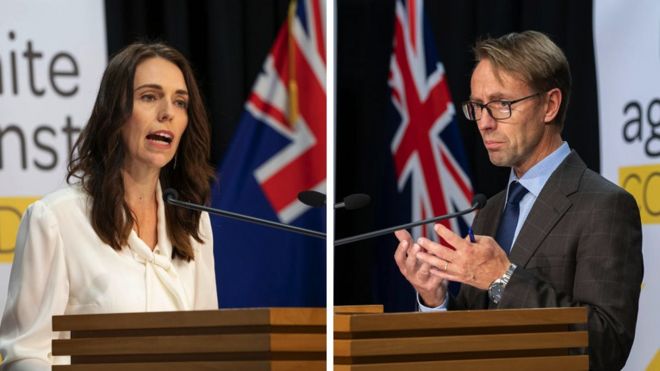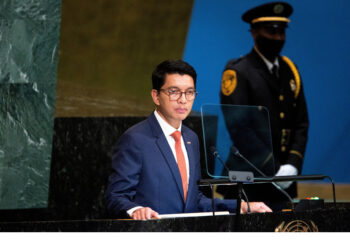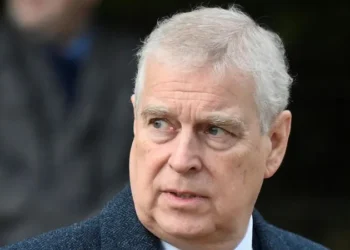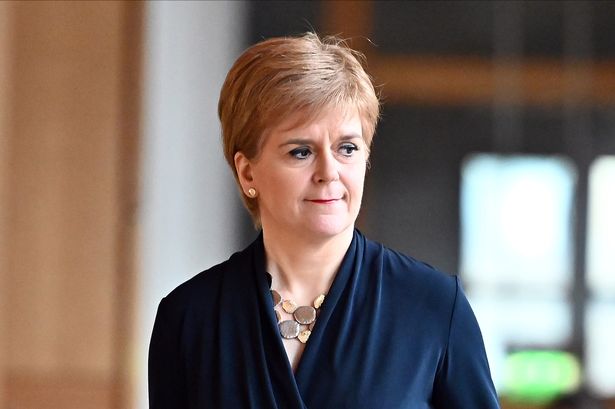Prime Minister Jacinda Ardern has announced Auckland will go into lockdown and the rest of the country will go into level 2
It comes after four cases of community transmission from the same family were confirmed – after 102 days without any.
As of noon tomorrow, Auckland will move to level 3 for three days until midnight on Friday.
The rest of the country will move to alert level 2 at midday tomorrow – until midnight on Friday.
For Auckland, that means working from home unless you were an essential service worker.
The area covered by level 3 is the Auckland Super City – from Wellsford in the north to Pukekohe in the south.
Schools will close unless they had students whose parents were essential workers. Public facilities, bars, restaurants and businesses must close tomorrow.
“We’re asking people in Auckland to stay home to stop the spread,” Ardern said.
“Act as if you have Covid, and as though people around you have Covid.”
Pharmacies and supermarkets will remain open, but Ardern said there was no reason to panic-buy.
Aucklanders should use a mask if they leave the house to access essential services. The rest of the country should wear a mask in situations where they can’t socially distance.
People who are in Auckland who need to go home to another region can do so but they should keep an eye on their health. There will be more advice tomorrow for these people and those who have recently travelled from Auckland.
Ardern said Aucklanders should keep an eye out for their neighbours.
“We have come too far to go backwards. Be strong and be kind.
“We know what to do because we have successfully done this before.”
She acknowledged Kiwis might now have a sinking feeling but said they should know we had gone the longest of any country and there was a plan being actioned.
“My request is not to be dispirited or disheartened.”
Ardern said it would not be possible to isolate a small part of Auckland, and imposing level 3 on all of Auckland was about taking a precautionary approach.
For the rest of the country, mass gatherings will be limited to 100 people.
Director general of health Ashley Bloomfield also advised aged residential care facilities to stop all visits, given how vulnerable older people are to Covid-19.
The new cases
The four confirmed cases are in one family acquired from an unknown source. There was no link to overseas or managed isolation.
An Auckland man in his 50s was tested yesterday after having symptoms. He had no history of overseas travel and was tested a second time today. Both tests were positive.
Six other people were in his family, and three of them have tested positive. The other three tested negative.
Close contacts have been isolated for 14 days regardless of their test results. Casual contacts are also being isolated and cannot leave until they test negative.
Bloomfield said he was expecting to find other cases because they didn’t know the source of the infection.
He declined to give the ages of the confirmed cases, but one child had tested positive, a pre-schooler who did not attend an ECE facility.
The man had fever and a cough, and the man’s partner also had strong symptoms, he said.
There was four to five days from symptom onset until they were tested, Bloomfield said, which was why close contacts were being followed up.
He wouldn’t say what suburb they live in in South Auckland, and the workplaces were “beyond South Auckland”.
Officials are discussing with the family about moving them into a quarantine facility.
Ardern said more information would be shared, but privacy issues needed to be considered.
More questions needed to be answered, Ardern said, including tracing the case to its source.
“There is no immediate link we have found, as yet to a managed isolation facility, and there is no connection to a high risk person, such as those who work at the border.”
Without knowing that, a precautionary approach was needed, she said, “as disruptive as it is”.
“One of the most important lessons we’ve learned from overseas is to go hard and go early to stamp out flare ups.
“We will be asking Aucklanders to take swift action with us.”
Ardern said more than one workplace was involved, and it wasn’t just one distinct suburb in Auckland that was likely affected.
Bloomfield said he didn’t have the detail about the two workplaces in question, but immediate action had been taken. One of the workplaces had been shut down already.
Neither workplace was customer-facing, he said.
Workers at the border are also being tested.
“I know this information will be very difficult to receive,” Ardern said.
“As a team we have also been here before. We know if we have a plan and we stick to it we can work through very difficult situations.”
Bloomfield was not concerned that the cases might be linked to the person who tested positive after travelling from New Zealand to South Korea. Ardern added that the close contacts around that person all tested negative.
Ardern said undetected cases in the community would see hospital admissions, and the absence of that showed that the spread was less likely to be wider.
Moving back into lockdown was a potential scenario, Ardern said, but there will be daily updates to inform the public on the progress of the testing of close and casual contacts.
“These are very significant decisions. Moving an entire city to level 3 is not a decision we take lightly. We need to make sure we have as much information as possible.”
Auckland Mayor calls for calm
Auckland Mayor Phil Goff is tonight calling for calm and patience as the city goes into another lockdown.
“I understand that people are probably feeling a little bit scared, a little angry and a little confused right now. None of us wanted to go back into a lockdown, but we always knew this was a very real possibility,” said Mayor Goff.
“I am urging Aucklanders to come together like we did last time to stamp out community transmission. Please remain calm, please do not panic buy and please follow the lockdown rules.
“Please follow Ministry of Health advice around good hygiene practices and social distancing. If you have symptoms, please make sure you get tested and avoid contact with others.
“We beat community transmission once and we can do again, but that requires all of us to work as a team.
“Like last time, more details will be forthcoming over the next little while, so please keep updated through news channel and official government websites.
A ‘wake-up call’ – Bloomfield
Bloomfield said additional testing will be available around the country to expect the expected increase in demand. People with any symptoms should get tested, he said, whether they are in Auckland or not.
More staff will be placed at testing centres in Auckland, Waitemata and Counties Manukau and they were prepared to test more people.
There are testing sites at Northcote, Henderson, Grafton and Wiri. There will be more pop-up testing sites.
He said community transmission was inevitable as it was a tricky virus, and it was important now to “stamp it out”.
“There are things every New Zealander needs to do.”
Those included hand hygiene, coughing into your elbow, staying a home if sick, and seeking advice from doctors or Healthline is you have symptoms.
He encouraged people to wear masks in places where it was hard to be physically distant.
He urged people to use the Covid tracer app.
“Finally our contact tracing team will of course be in contact with anyone who may be identified as a casual or close contact.”
If contacted, please return the call, he said.
The cases were a “wake up call” against complacency.
“We have done this before and we can do it again.”
Bloomfield said it was more relevant than ever to get tested if offered a test.
Ardern said the resurgence plan had been activated, based on what had happened overseas.
Earlier case
New Zealand went into level 4 lockdown on March 25, and moved to level 3 on April on April 27. We moved into level 2 on May 13 and level 1 on June 9.
Earlier today, Bloomfield said there was one new Covid-19 in managed isolation – a man in his 20s who arrived in New Zealand on July 30 from Melbourne.
He said the man tested negative on day 3 but went on to test positive on day 12.
The man had been in managed isolation at the Grand Millennium and has now been transferred to the Auckland quarantine facility.
There were 22 active cases all being treated in managed isolation facilities after testing detected the illness in returning Kiwis at the border.
It brought the total number of those who have had Covid-19 to 1220.
/cloudfront-ap-southeast-2.images.arcpublishing.com/nzme/LDJI6G7PMNHGXOVPEFK36UWK24.jpg)
Bloomfield said work was already under way on planning a Covid-19 immunisation campaign, although a vaccine was yet to be developed.
“We are not sitting idle, we have work under way to look at how we could deliver that vaccine.”
Earlier today two Christchurch rest homes went into partial lockdown after residents displayed flu-like symptoms.
Brookhaven Retirement Village in Woolston has reportedly tested eight of its residents and put them in isolation.
And the Village Palms Retirement Community in Shirley had advised family members in a letter that it was in lockdown after residents began displaying symptoms of a respiratory illness. Eight residents were displaying flu-like symptoms.
The Government ramped up its messaging last week despite the nation approached 100 days without community transmission.
Bloomfield confirmed masks could be mandatory in some situations if the country moved up alert levels. And there were also warnings about the likelihood of a “second wave” of infection.
“We all know, we can’t afford to be complacent,” Bloomfield said in a statement.
“We have seen overseas how quickly the virus can re-emerge and spread in places where it was previously under control, and we need to be prepared to quickly stamp out any future cases in New Zealand. Every person in the team of five million has a role to play in this.”
National’s deputy leader Gerry Brownlee said on Sunday the change in messaging was “very puzzling” and he called on the Government “come clean” about what it knew.
“People have made a big effort on this and they expect to get all the relative freedom,” he said.
“None of us are complacent about it, I believe, it is something that is going to be with the world from this point on.”
Alert levels
Alert Level 3 — Restrict
Community transmission might be happening.
• Range of measures that can be applied locally or nationally.
• People instructed to stay home in their bubble other than for essential personal movement — including to go to work, school if they have to or for local recreation.
• Physical distancing of 2 metres outside home including on public transport, or 1 metre in controlled environments like schools and workplaces.
• Bubbles must stay within their immediate household bubble but can expand this to reconnect with close family/whānau, or bring in caregivers or support isolated people. This extended bubble should remain exclusive.
• Schools between years 1 to 10 and Early Childhood Education centres can safely open but will have limited capacity. Children should learn at home if possible.
• People must work from home unless that is not possible.
• Businesses can open premises, but cannot physically interact with customers.
• Low-risk local recreation activities are allowed.
• Public venues are closed. This includes libraries, museums, cinemas, food courts, gyms, pools, playgrounds, markets.
• Gatherings of up to 10 people are allowed but only for wedding services, funerals and tangihanga. Physical distancing and public health measures must be maintained.
• Healthcare services use virtual, non-contact consultations where possible.
• Inter-regional travel is highly limited to, for example, essential workers, with limited exemptions for others.
• People at high risk of severe illness such as older people and those with existing medical conditions are encouraged to stay at home where possible, and take additional precautions when leaving home. They may choose to work.
Alert Level 2 — Reduce
The disease is contained, but the risk of community transmission remains. Risk assessment. Household transmission could be occurring. Single or isolated cluster outbreaks.
• People can reconnect with friends and family, and socialise in groups of up to 100, go shopping or travel domestically if following public health guidance.
• Keep physical distancing of 2 metres from people you don’t know when out in public or in retail stores. Keep 1 metre physical distancing in controlled environments like workplaces, where practical.
• No more than 100 people at gatherings, including weddings, birthdays, funerals and tangihanga.
• Businesses can open to the public if following public health guidance including physical distancing and record keeping. Alternative ways of working are encouraged where possible.
• Hospitality businesses must keep groups of customers separated, seated and served by a single person.
• Maximum of 100 people at a time in a defined space.
• Sport and recreation activities are allowed, subject to conditions on gatherings, record keeping, and physical distancing where practical.
• Public venues such as museums, libraries and pools can open if they comply with public health measures and ensure 1 metre physical distancing and record keeping.
• Event facilities, including cinemas, stadiums, concert venues and casinos can have more than 100 people at a time, provided there are no more than 100 in a defined space, and the groups do not mix.
• Health and disability care services operate as normally as possible.
• It is safe to send your children to schools, early learning services and tertiary education. There will be appropriate measures in place.
• People at higher risk of severe illness from COVID-19, for example those with underlying medical conditions, especially if not well-controlled, and older people, are encouraged to take additional precautions when leaving home. They may work if they agree with their employer that they can do so safely.










Discussion about this post